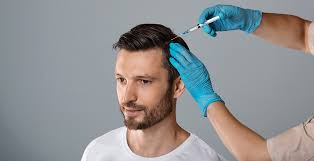
2024-12-16T14:29:38
PRP (Platelet-Rich Plasma) hair regrowth treatment is a non-surgical procedure that involves using your own blood to stimulate hair growth. It has gained popularity as a natural method to treat hair loss, particularly for androgenic alopecia (male and female pattern baldness). Here's an overview of how the process works and its effectiveness: Blood Drawn: A small amount of blood is drawn from your arm, typically similar to a standard blood test. Processing the Blood: The blood is placed in a centrifuge to separate its components. The goal is to concentrate the platelets (the cells that help with healing) and growth factors that promote hair follicle regeneration and repair. Platelet-Rich Plasma (PRP): The processed plasma, which contains a higher concentration of platelets, is extracted. These platelets are rich in growth factors, which are key in stimulating hair follicle growth. Injection into Scalp: The PRP is then injected into areas of the scalp that are experiencing hair thinning or hair loss. The injections are usually spaced a few millimeters apart and target areas where hair growth is weak or inactive. Stimulates Hair Growth: The growth factors in PRP help to stimulate the hair follicles, promoting healthier and thicker hair growth. Minimal Downtime: Since PRP uses your own blood, the risk of allergic reactions is minimal, and the procedure is minimally invasive, requiring little to no recovery time. Non-Surgical: Unlike hair transplants, PRP is non-surgical, making it an attractive option for people who want to avoid more invasive procedures. Can Improve Hair Density: With regular treatments, many people report improved hair density, reduced shedding, and overall healthier hair.

